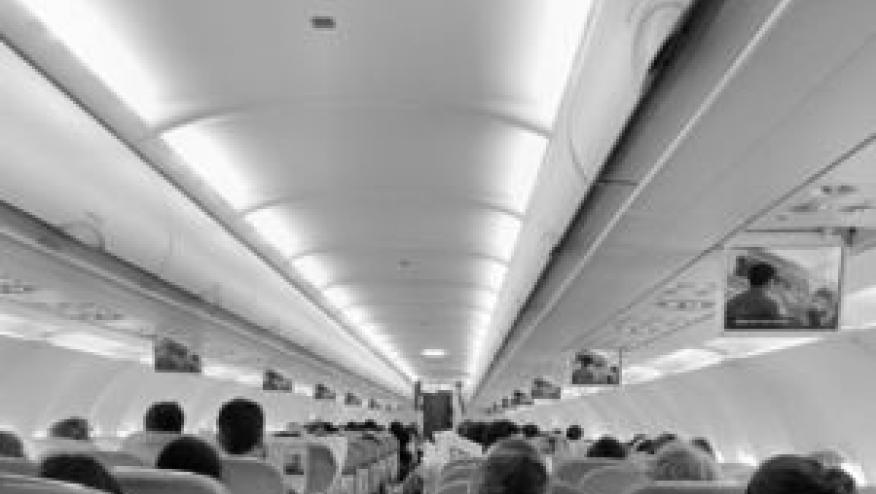Travel During COVID-19 Pandemic Save

The CDC has addressed the effects and the issues of domestic and international travel on its website. Below is a sampling of key advice.
The Centers for Disease Control and Prevention (CDC) has announced that all travelers flying to the U.S. from abroad will have to show proof of negative Covid-19 tests before boarding their flight starting Jan. 26. The CDC said preflight testing is necessary as Covid-19 cases continue to soar and new, more contagious strains of the virus emerge around the world.
If traveling outside the USA, you should note that both the CDC and Homeland Security upate the current restrictions on travel to foreign countries.
- CDC Global Travel Alerts
- CDC International Destination Risks (1=Low; 4=Very High)
- Homeland Security Arrival Restrictions
Domestic Travel During the Pandemic
A comprehensive resource for domestic travel is also available from the CDC . The CDC states the following:
- Travel can increase your chance of spreading and getting COVID-19. Postponing travel and staying home is the best way to protect yourself and others from COVID-19.
- If you have a known exposure to COVID-19 you should delay travel, quarantine yourself from other people, get tested, and monitor your health. Check your state or local health department for information about local quarantine requirements.
- Don’t travel if you are sick or test positive for COVID-19. Don’t travel with someone who is sick.
- Are cases high or increasing in your community or your destination? The more cases in your community of origin or at your destination, the more likely you are to get and spread COVID-19 as a result of your door-to-door travel.
- Check Each State’s Cases in the Last 7 Days.
- Check state and local requirements before you travel.
- Are hospitals in your community or your destination overwhelmed with patients who have COVID-19? To find out, check state and local public health department websites.
- Does your home or destination have requirements or restrictions for travelers?
- Testing may improve the safety of travel. The safest thing to do is to stay home, but if you do decide to travel, testing can help you do so more safely. If you are traveling, consider getting tested with a viral test 1-3 days before your trip. Also consider getting tested with a viral test 3-5 days after your trip and reduce non-essential activities for a full 7 days after travel, even if your test is negative. If you don’t get tested, consider reducing non-essential activities for 10 days after travel.Keep a copy of your test results with you during travel; you may be asked for them.
- Do not travel if you test positive; immediately isolate yourself, and follow public health recommendations.
- Stay at least 6 feet/2 meters (about 2 arm lengths) from anyone who did not travel with you, particularly in crowded areas. It’s important to do this everywhere — both indoors and outdoors. (Editors note: the greatest risk when flying is probably not inside the plane, but rather entering the airport, TSH checkpoints, food court, planeing and deplaneing)
- Wear a mask to keep your nose and mouth covered when you are in shared spaces outside of your home, including when using public transportation.
- The following activities during travel may put you at higher risk:
- Large social gathering like a wedding, funeral, or party
- Attending a mass gathering like a sporting event, concert, or parade
- Being in crowds like in restaurants, bars, fitness centers, or movie theaters.
- Being on trains, buses, in airports, or using public transportation.
- Traveling on a cruise ship or river boat.
- Get your flu shot before you travel.
- Bring extra supplies, such as masks and hand sanitizer.
- When traveling it may be safer to stay apart from family or friends, in a separate accommodation like a hotel, guest house, or short-stay rental.
Modes of Travel: Considerations
- Air Travel: Air travel requires spending time in security lines and airport terminals, which can bring you in close contact with other people and frequently touched surfaces. Most viruses and other germs do not spread easily on flights because of how air is circulated and filtered on airplanes. However, social distancing is difficult on crowded flights and sitting within 6 feet of others, sometimes for hours, may increase your risk of getting COVID-19. How you get to and from the airport, such as with public transportation and ridesharing, can also increase your chances of being exposed to the virus.
- Bus or train travel: Traveling on buses and trains for any length of time can involve being in crowded terminals and sitting or standing within 6 feet of others, which may increase your risk of getting COVID-19. If you choose to travel by bus or train, learn what you can do to protect yourself on public transportation.
- Car travel: Making stops along the way for gas, food, or bathroom breaks can put you and your traveling companions in close contact with other people and frequently touched surfaces.
- RV travel: You may have to stop less often for food or bathroom breaks, but RV travel usually means staying at RV parks overnight and getting gas and supplies at other public places. These stops may put you and those with you in the RV in close contact with others.
Please continue to practice Social Distancing (you're safe when YOU control your environment); Hand washing, Wearing a Mask, Staying Home (when appropriate) and protecting those who are at risk for severe COVID illness.









If you are a health practitioner, you may Login/Register to comment.
Due to the nature of these comment forums, only health practitioners are allowed to comment at this time.